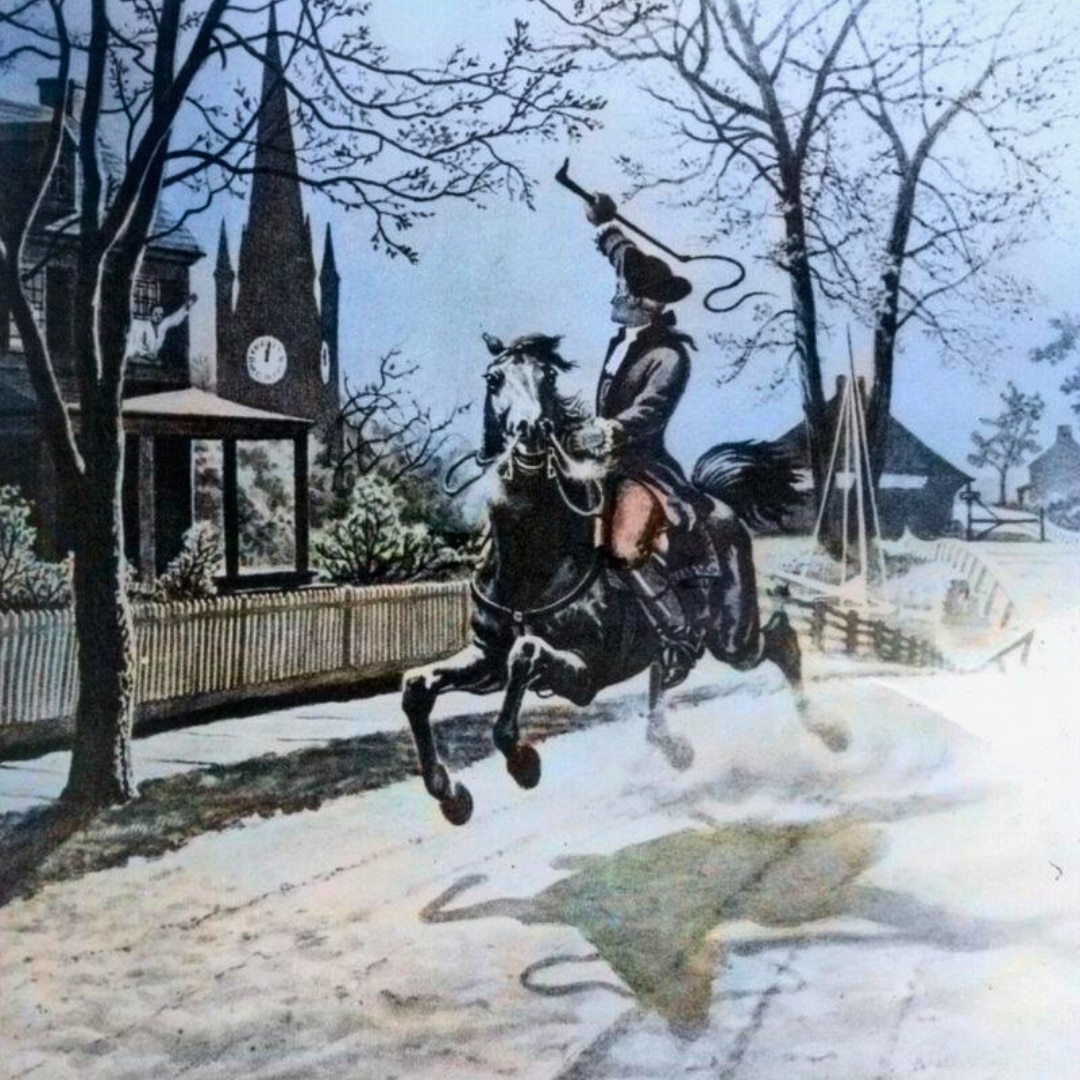
Paul Revere and his midnight ride on April 18, 1775, alerted the patriots of advancing enemy forces. His ride, marked by lanterns in the Old North Church, became a pivotal moment in American history. What drove this icon of American history to risk his life for the cause of liberty?
Tension was palpable in the days leading up to the famed midnight ride of Paul Revere. Colonial unrest simmered as British troop movements signaled an impending confrontation.
The colonies were a tinderbox of revolutionary sentiment, ready to ignite at any sign of aggression. Revere, aware of the precarious situation, helped devise a lantern signal system with Robert Newman to communicate the route of the British attack—one lantern for a land approach, two for a sea approach.
British warships, particularly the H.M.S. Somerset, loomed ominously, restricting communication among the Sons of Liberty. Amidst this backdrop, Revere prepared for his mission, borrowing a horse from John Larkin.
His task: to alert key figures and towns of the approaching British forces, thereby mobilizing colonial resistance. Patrick Henry's "Give me Liberty, or give me Death!" speech inspired many revolutionaries to act decisively in the face of British oppression.
Amid the charged atmosphere of impending conflict, Paul Revere commenced his midnight ride on April 18, 1775, a pivotal mission in American history.
Tasked by Dr. Joseph Warren, Revere's mission was to alert the patriots of Lexington and Concord about the advancing British forces. The lantern signal from the Old North Church—two lanterns—confirmed the troops' sea route.
Mounted on a horse borrowed from John Larkin, Revere navigated the night, warning Samuel Adams and John Hancock of the imminent threat. Although captured before reaching Concord, his alarm had already spread.
The ride, immortalized by Longfellow's later poem, symbolized the urgency and determination that fueled the American Revolution, cementing Revere's lasting place in history.
Reverberations of Paul Revere's midnight ride resonated deeply through the annals of American history, shaping his legacy long after the fateful night of April 18, 1775.
The ride's historical significance was cemented by Henry Wadsworth Longfellow's 1861 poem, which immortalized Revere as a symbol of American patriotism. This cultural impact transformed Revere from a modest silversmith into a national hero, despite his obituary in 1818 neglecting the event.
The ride's success in alerting militias contributed to pivotal early victories in Lexington and Concord, fueling the Revolutionary War's momentum.
The Old North Church's annual lantern ceremony, initiated in 1875, further entrenched Revere's midnight ride into American cultural memory, illustrating its enduring influence on national identity.
In Paul Revere's engraving, the dog symbolizes loyalty and companionship during uncertain times. Engraving details emphasize the close-knit nature of colonial families, reflecting their involvement in revolutionary activities and the role of dogs in alerting communities to danger.
Revere's horse, though unnamed in historical records, holds historical significance as it was essential for Paul Revere's midnight ride. After the ride, the horse was confiscated by British patrols, and its ultimate fate remains unknown.
Paul Revere's ride represents Revolutionary symbolism through its midnight warning, alerting colonists to British advances. This act of urgency and communication played an essential role in mobilizing the colonial resistance, ultimately igniting the flames of the American Revolution.
The horse breed used by Paul Revere remains a mystery. Though speculated to be a precursor to the Morgan Horse, the historical significance of Revere's ride overshadows the details of its equine participant's lineage.
Paul Revere's midnight ride stands as a testament to the power of individual courage in shaping history. His urgent message, delivered with unyielding determination, acted as a catalyst for unity among the colonial militias. This act of vigilance and loyalty not only thwarted immediate threats but also ignited a lasting legacy of resistance and patriotism. As a symbol of the revolutionary spirit, Revere's journey continues to inspire, reminding us of the impact one person can have in times of crisis.